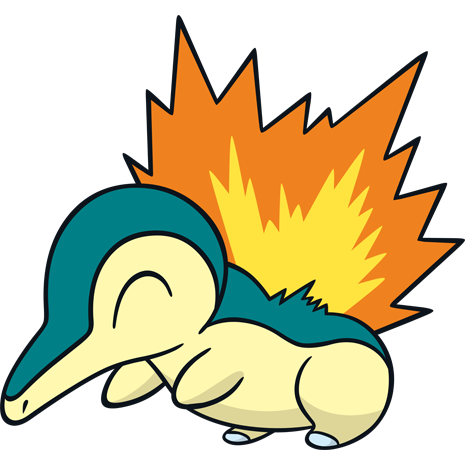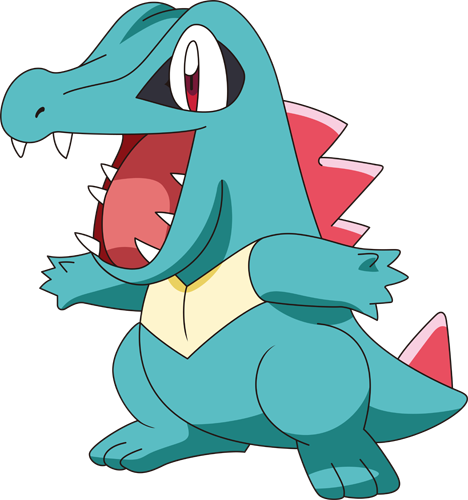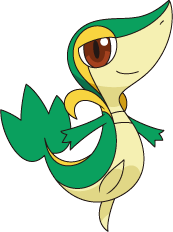Hoenn is the region featured in Generation III: Ruby, Sapphire, and Emerald versions. Unlike the last two regions, Hoenn is an island chain. It's based on Kyushu, the southernmost of the main islands of Japan. I'll admit; it's also the region I'm least readily familiar with. It's been a while since I played Ruby or Sapphire.
The Game Boy Advance allowed the creators of Pokémon Ruby and Sapphire to put a little more variety into their building models, and that's exactly what they did. Many of the big cities have their own flavor compared to each other. Rustboro is a somewhat old-fashioned city with buildings made out of stone, Slateport is a bustling open-air seaside city, and Lilycove is a high-end metropolis similar to Goldenrod in Johto and Celadon in Kanto. The smaller towns stand out from each other too, especially Fortree -- a town where all the residential buildings are treehouses -- and Pacifidlog -- a town in the middle of the sea built on top of a colony of coral Pokémon named Corsola (who are also native to Johto).
Like Johto, Hoenn has a few Pokémon that feature in myths and legends. Most notable among them are Groudon, Kyogre, and Rayquaza. Groudon and Kyogre are feuding Pokémon that can control the weather in different ways. Groudon can clear away clouds and cause sunlight to become harsh, while Kyogre summons rainstorms. Their constant fighting can only be settled by the intervention of Rayquaza, a dragon Pokémon whose presence causes the surrounding weather to become calm and mild. Other legendary Pokémon that appear in Hoenn include the three golems: Regirock, Regice, and Registeel; and the telepathic, illusionist bird-dragons Latios and Latias.
I think Hoenn would be just as good a place to live in the Pokémon world as Johto; it's hard to decide which of them is my favorite. I wouldn't mind the warm weather at all, and the selection of Pokémon to choose from is pretty good, even if I haven't played with many of them in a while. And the variety of the cities and towns should make them fun to explore.
Next up is Sinnoh, featured in Generation IV: Diamond, Pearl, and Platinum versions. It's the largest out of the five main-series regions so far. But as you can see on the map, this vast expanse is also an island. Sinnoh is based on Honshu, the northernmost of the main islands of Japan.
In terms of climate, Sinnoh is the opposite of Hoenn. It has a very cold climate, with the northern part of the island perpetually covered in snow. As such, Ice-type Pokémon are more abundant here than in the other regions. There isn't quite as much of a variety of Pokémon habitats, either. Most of the region is mountainous, making it a good home for Rock, Steel, and Ground-type Pokémon. However, there are a few forests to explore, and the southeastern part of the island has a nice beach and a swamp.
Sinnoh has some variety in its cities, though not quite as much as Hoenn. Most of the big cities are industrial and stony in appearance, especially Oreburgh, Veilstone, and Canalave. Meanwhile, there are a few smaller towns with pleasant forests and gardens. For example, Floaroma Town's specialty, as the name suggests, is producing flowering plants. The cities that stand out the most to me are the northernmost city, Snowpoint, and Sunyshore (yes, it's spelled with one "n"), on the southeastern beach. Snowpoint is the obligatory snow-covered city, and it also has a secret hidden in its ancient temple. Sunyshore has elevated walkways covered with solar panels, an electric power plant for a Pokémon Gym, and a bright lighthouse.
Sinnoh has many myths and legends about Pokémon, and the legendary Pokémon that appear here are deeply tied to the culture of Sinnoh. Most of these legends are related to Arceus, who is essentially the creator of the Pokémon universe. Arceus lives in the Hall of Origin atop Mt. Coronet (the big mountain in the middle of the map with the swirly black hole over it) and is in charge of two trios of Pokémon. The first group consists of three dragon Pokémon: Dialga, the ruler of time; Palkia, the ruler of space; and Giratina, who lives in the alien Distortion World and has power over antimatter. The other group is the sprites who live in the three lakes on the corners of the island: Mesprit, who represents emotion; Uxie, who represents knowledge and reason; and Azelf, who represents the power of will. And there are plenty more legends where that came from, probably too many to list here.
As much as I hate to say this, I think Sinnoh would be my least favorite choice out of the regions as a place to live. It has several Pokémon that appeal to me, but not quite as many as the other regions. Also, call me a mutant space reptile if you want, but I don't really like cold weather that much. It's certainly not a bad place; it just doesn't fit my personal taste that well. I will admit, I do like the way all the myths and legends are incorporated into the region, and the Sinnoh dragons are pretty cool.
Goodness, look at the time! See you next time, when I talk about Unova and then recap and sum up which regions are my favorite. Good luck catchin' 'em all!
(all images provided by Bulbapedia)
 |
| Slateport City |
Hoenn has a very warm, tropical climate. It has a surprisingly wide variety of different Pokémon habitats compared to the other regions. As always, there are plenty of forests, mountains, and grasslands to explore, but there are several areas of the map that stand out. The northernmost portion of the main island contains a sandy desert surrounded by rocky cliffs, and just to the west of that is a dormant volcano well-suited for Ground and Fire-type Pokémon. But the most prominent feature of the region is its water. When you're playing these games, you'll definitely need a Pokémon that knows the move Surf so you can cross the rivers, lakes, and ocean between the towns. It should be no surprise that Water-type Pokémon are especially numerous here.
 |
| Fortree City |
 |
| Groudon, Kyogre, and Rayquaza |
I think Hoenn would be just as good a place to live in the Pokémon world as Johto; it's hard to decide which of them is my favorite. I wouldn't mind the warm weather at all, and the selection of Pokémon to choose from is pretty good, even if I haven't played with many of them in a while. And the variety of the cities and towns should make them fun to explore.
Next up is Sinnoh, featured in Generation IV: Diamond, Pearl, and Platinum versions. It's the largest out of the five main-series regions so far. But as you can see on the map, this vast expanse is also an island. Sinnoh is based on Honshu, the northernmost of the main islands of Japan.
 |
| Snowpoint City |
 |
| Sunyshore City |
 |
| Palkia, Giratina, and Dialga |
As much as I hate to say this, I think Sinnoh would be my least favorite choice out of the regions as a place to live. It has several Pokémon that appeal to me, but not quite as many as the other regions. Also, call me a mutant space reptile if you want, but I don't really like cold weather that much. It's certainly not a bad place; it just doesn't fit my personal taste that well. I will admit, I do like the way all the myths and legends are incorporated into the region, and the Sinnoh dragons are pretty cool.
Goodness, look at the time! See you next time, when I talk about Unova and then recap and sum up which regions are my favorite. Good luck catchin' 'em all!
(all images provided by Bulbapedia)























